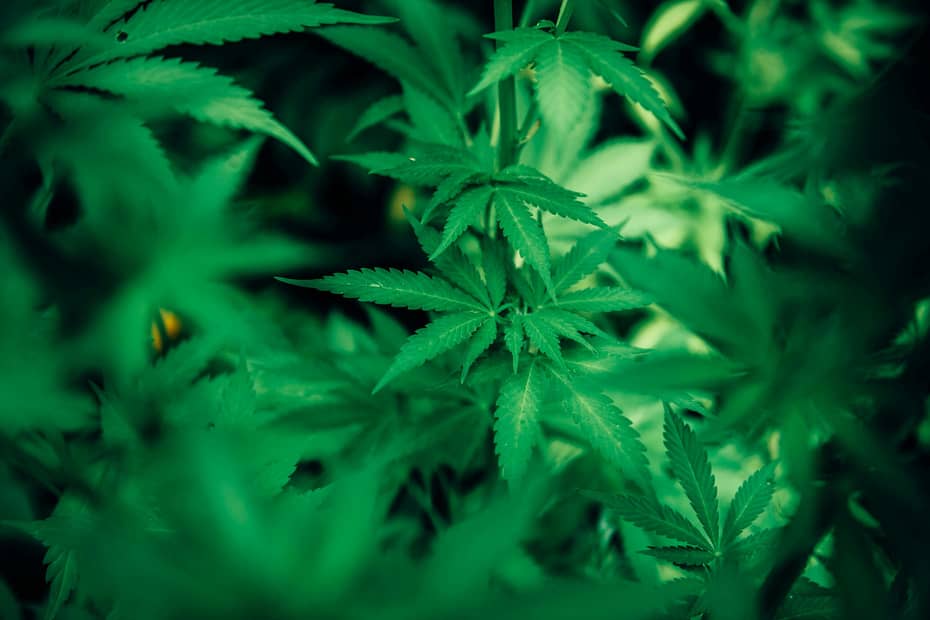Colorado is quickly becoming a haven for cannabis enthusiasts and entrepreneurs alike. If you’ve ever found yourself wondering what licenses are needed to legally cultivate cannabis in the Centennial State, look no further. This article will provide you with a concise overview of the licenses required for cannabis cultivation in Colorado, ensuring that you are well-informed and ready to embark on this exciting journey.
1. Overview of Cannabis Cultivation Licenses
1.1 Medical Marijuana Cultivation License
In Colorado, a medical marijuana cultivation license is required for individuals or businesses that want to cultivate marijuana for medical purposes. This license allows for the cultivation of marijuana plants specifically for medical use, and it is regulated by the state’s Department of Revenue’s Marijuana Enforcement Division (MED).
1.2 Recreational Marijuana Cultivation License
Alternatively, a recreational marijuana cultivation license is needed for those who wish to cultivate marijuana for recreational purposes. This license allows for the cultivation of marijuana plants for non-medical use, such as adult-use or recreational consumption. Like the medical marijuana cultivation license, the recreational cultivation license is overseen by the MED.
1.3 Dual Cultivation License
In some cases, individuals or businesses may choose to obtain both a medical marijuana cultivation license and a recreational marijuana cultivation license. This dual cultivation license permits the cultivation of marijuana plants for both medical and recreational purposes. It provides flexibility for cultivators who want to cater to both markets.
1.4 Key Differences Between Medical and Recreational Cultivation Licenses
While both medical and recreational cultivation licenses allow for the cultivation of marijuana plants, there are several key differences between the two.
One major difference is the intended use of the cultivated marijuana. Medical marijuana is grown specifically for therapeutic purposes and is sold to individuals with qualifying medical conditions. Recreational marijuana, on the other hand, is cultivated for adult-use and is sold to individuals who are 21 years of age or older.
Additionally, there may be variations in cultivation limits, taxation, and labeling requirements between medical and recreational cultivation licenses. It is important for cultivators to understand and comply with the specific regulations associated with their chosen license type.
2. Applying for a Cannabis Cultivation License
2.1 Department of Revenue’s Marijuana Enforcement Division (MED)
The application process for a cannabis cultivation license in Colorado is managed by the Department of Revenue’s Marijuana Enforcement Division (MED). The MED is responsible for regulating the cultivation, distribution, and sale of both medical and recreational marijuana within the state.
2.2 Eligibility Requirements
To be eligible for a cannabis cultivation license, individuals or businesses must meet certain criteria set forth by the MED. These requirements may include:
- Being at least 21 years of age (for recreational cultivation licenses).
- Having a valid Occupational License from the Colorado Department of Regulatory Agencies (for medical cultivation licenses).
- Not having any disqualifying criminal convictions.
It is essential to thoroughly review and understand the eligibility requirements before applying for a cultivation license to ensure compliance with the MED’s regulations.
2.3 Application Process
The application process for a cannabis cultivation license typically involves several steps. These may include:
- Completing the application form provided by the MED.
- Providing detailed information about the proposed cultivation facility, including its location, size, and layout.
- Submitting a comprehensive business plan that outlines cultivation techniques, security measures, and compliance procedures.
- Paying the required application fees.
Applicants should carefully follow the instructions provided by the MED to ensure a complete and accurate application submission.
2.4 Required Documentation and Fees
When applying for a cannabis cultivation license, applicants must submit various supporting documents to the MED. These documents may include:
- Proof of eligibility, such as identification documents and occupational licenses.
- Detailed floor plans and security system specifications for the proposed cultivation facility.
- Financial statements and business documents to demonstrate the applicant’s financial stability.
- Proof of compliance with local zoning and land use regulations.
In addition to the required documentation, applicants must pay the applicable fees associated with the license application. These fees vary depending on the license type and the size of the cultivation operation.
3. Security and Compliance Measures
3.1 Surveillance and Security Systems
To ensure the safety and security of the cultivation facility, strict surveillance and security measures must be implemented. These measures typically include:
- Installing high-quality video surveillance cameras throughout the facility, covering all areas including entrances, exits, and grow rooms.
- Maintaining recorded video footage for a specified period, as required by state regulations.
- Implementing an alarm system to detect unauthorized access or suspicious activities.
- Restricting access to the cultivation areas to authorized personnel only.
By implementing robust security systems, cultivators can minimize the risk of theft, unauthorized access, and diversion of marijuana products.
3.2 Inventory Tracking and Reporting
Cultivators are required to implement inventory tracking systems to accurately record and report all cannabis plants, products, and waste. These tracking systems allow for real-time monitoring of inventory levels and help ensure compliance with state regulations.
By using tracking software or similar tools, cultivators can record important information such as the number of plants, strain types, growth stages, and quantities of harvested and sold products. This information is crucial for maintaining accurate records and facilitating regulatory compliance.
3.3 Compliance with State Regulations
Cultivation operations must adhere to a multitude of state regulations to maintain compliance. These regulations cover various aspects of cultivation, including:
- Pest control and pesticide usage.
- Packaging and labeling requirements.
- Advertising and marketing restrictions.
- Waste disposal and environmental practices.
- Transportation and distribution protocols.
- Health and safety standards.
Non-compliance with state regulations can result in significant penalties, fines, and the potential loss of cultivation licenses. It is crucial for cultivators to stay up to date with the latest regulations and ensure strict adherence to maintain compliance.
4. Cultivation Facility Requirements
4.1 Facility Size and Layout
Cultivation facility requirements in Colorado vary depending on the license type and the scale of the operation. The facility must provide adequate space for various operations, including plant propagation, vegetative growth, and flowering.
The layout should be designed to optimize workflow efficiency, minimize the risk of contamination, and facilitate proper ventilation and climate control. It is essential to ensure compliance with local building and zoning codes when designing a cultivation facility.
4.2 Lighting and Environmental Controls
Proper lighting and environmental controls are crucial for successful cannabis cultivation. Cultivators must implement lighting systems that provide the appropriate spectrum and intensity for each stage of plant growth.
Environmental controls, such as temperature, humidity, and CO2 levels, also play a vital role in plant health and productivity. Monitoring and maintaining optimal environmental conditions within the cultivation facility is essential to maximize yield and produce high-quality cannabis products.
4.3 Water and Irrigation Systems
Cannabis plants require consistent and appropriate watering to thrive. Cultivation facilities must have reliable water sources and efficient irrigation systems.
Water quality is also a critical consideration, as certain impurities or imbalances in the water can negatively impact plant health. Cultivators may choose to install water filtration systems to ensure the delivery of clean and nutrient-rich water to the plants.
4.4 Pest and Disease Management
Pests and diseases can significantly impact cannabis cultivation if not managed effectively. Cultivators must implement integrated pest management strategies to prevent and control infestations.
This may involve regular inspections, implementing physical barriers, using organic or chemical treatments, and maintaining strict cleanliness and sanitation protocols. Preventive measures are essential to minimize the risk of pests and diseases, as the use of pesticides on cannabis plants is highly regulated.
4.5 Waste Management and Disposal
Cultivation facilities generate various types of waste, including plant trimmings, unused or expired products, and packaging materials. Proper waste management and disposal practices are necessary to meet regulatory requirements and environmental standards.
Cultivators must have a waste management plan in place that includes procedures for the handling, storage, and disposal of different types of waste. Recycling, composting, and proper labeling of waste materials are crucial considerations for sustainable waste management practices.
5. Cultivation Techniques and Processes
5.1 Seed Selection and Germination
The cultivation process begins with the selection and germination of high-quality seeds or clones. Cultivators must choose seeds that are genetically stable and capable of producing the desired characteristics and traits.
Germination is the process of encouraging seeds to sprout and develop into healthy seedlings. Proper germination techniques, such as providing adequate moisture, temperature, and light, are essential for successful seedling development.
5.2 Cloning and Propagation
Cloning is a common technique used by cultivators to produce genetically identical plants from a single parent plant. Cloning allows cultivators to replicate desirable traits and establish consistency in their cannabis crops.
The cloning process involves taking cuttings from a healthy mother plant, treating them with rooting hormones, and providing the optimal environmental conditions for root development. Once rooted, the clones can be transplanted into a growing medium to continue their growth.
5.3 Vegetative Growth
During the vegetative growth stage, cannabis plants focus on developing a strong root system and abundant foliage. Cultivators must provide the appropriate lighting, nutrients, and environmental conditions to promote healthy vegetative growth.
The duration of the vegetative stage can vary depending on the desired plant size and overall cultivation timeline. Regular trimming and pruning may be necessary to shape the plants and promote optimal growth.
5.4 Flowering and Harvesting
The flowering stage is when the cannabis plants start producing flowers or buds. This stage is triggered by changes in light cycles, specifically by providing a longer period of uninterrupted darkness.
During flowering, cultivators must manage light intensity, temperature, humidity, and airflow to ensure optimal bud development. Monitoring the plants for signs of pests, diseases, or nutrient deficiencies is crucial to address any issues promptly.
Once the buds have reached their optimal maturity, cultivators can proceed with the harvesting process. Harvesting involves carefully cutting and preparing the plants for further processing and drying.
5.5 Drying, Curing, and Storage
After harvest, the cannabis buds need to be dried and cured to achieve the desired quality, potency, and flavor. Proper drying techniques involve hanging the harvested plants upside down in a well-ventilated area with controlled temperature and humidity.
During the curing process, the dried buds are stored in airtight containers to allow for a slow and controlled release of moisture. Curing helps enhance the flavors and aromas of the cannabis, resulting in smoother and more enjoyable consumption.
Once dried and cured, the cannabis can be stored in suitable containers, such as glass jars, to maintain its quality and freshness. Proper storage conditions, including temperature, humidity, and light exposure, are crucial to extend the shelf life of the cannabis products.
6. Employee Requirements and Training
6.1 Background Checks and License Badging
Cultivation facilities are required to conduct thorough background checks on all employees who will have access to the cannabis plants or products. These background checks help ensure the integrity and security of the operation.
Additionally, employees must obtain license badges from the MED before they can work in the cultivation facility. These badges serve as official identification and indicate that the employees have met the necessary requirements and are authorized to handle cannabis.
6.2 Employee Training and Education
Proper training and education for employees are essential for maintaining a safe and compliant cultivation facility. Cultivators should provide comprehensive training programs that cover various aspects of cultivation, security, compliance, and safety.
Training topics may include plant care and cultivation techniques, proper use of equipment and machinery, waste management protocols, and compliance with state and local regulations. Ongoing education and training opportunities allow employees to stay updated on industry best practices and emerging trends.
6.3 Compliance with Occupational Safety and Health Administration (OSHA) Regulations
To ensure the safety and well-being of employees, cultivation facilities must comply with the guidelines set forth by the Occupational Safety and Health Administration (OSHA). OSHA regulations cover various aspects of workplace safety, including:
- Hazard communication and labeling of chemicals.
- Proper use of personal protective equipment (PPE).
- Fire safety and emergency response procedures.
- Ergonomics and safe work practices.
- Employee health and hygiene.
By implementing OSHA-compliant safety programs and providing ongoing training and education, cultivators can create a safe and healthy work environment for their employees.
7. Reporting and Record-Keeping Obligations
7.1 Daily Activity Logs
Cultivation facilities are required to maintain detailed daily activity logs that document various aspects of their operations. These logs may include information such as:
- Plant inventory counts and movements.
- Irrigation and nutrient application records.
- Pest management activities.
- Employee activities and tasks.
- Security system checks and maintenance.
Accurate and thorough daily activity logs help cultivators demonstrate compliance with state regulations and serve as a valuable record for internal control and analysis.
7.2 Inventory Records
Cultivation facilities must maintain comprehensive inventory records to account for all cannabis plants, products, and waste. These records should include detailed information such as:
- Strain names and identification numbers.
- Plant inventory counts at various growth stages.
- Quantities of harvested and sold products.
- Waste disposal records.
By keeping accurate inventory records, cultivators can ensure compliance with state regulations and accurately report their inventory for tax purposes.
7.3 Compliance with Seed-to-Sale Tracking System
In Colorado, cultivators are required to participate in the state’s seed-to-sale tracking system. This system enables the tracking and monitoring of cannabis plants and products throughout the cultivation process and the supply chain.
Cultivators must accurately enter and update information in the tracking system, including plant tags, harvest data, and product transfers. Compliance with the seed-to-sale tracking system is crucial for maintaining transparency, preventing diversion, and ensuring regulatory compliance.
8. Inspections and Audits
8.1 Routine Inspections by the MED
Cultivation facilities in Colorado are subject to routine inspections conducted by the MED. These inspections aim to ensure compliance with state regulations and assess the overall operation of the cultivation facility.
During inspections, MED representatives may review various aspects of the cultivation facility, including security measures, inventory records, employee qualifications, and compliance with health and safety regulations. Non-compliance or deficiencies identified during inspections may result in penalties, fines, or the suspension/revocation of the cultivation license.
8.2 State and Local Law Enforcement Audits
State and local law enforcement agencies may also conduct periodic audits of cultivation facilities to verify compliance with regulations and investigate any suspected violations or illegal activities. These audits may involve document reviews, interviews with employees, and physical inspections of the facility.
Cultivators must cooperate fully with any audits initiated by law enforcement agencies and promptly address any concerns or recommendations identified during the audit process.
8.3 Compliance with Health and Safety Regulations
Cultivation facilities must comply with health and safety regulations to protect employees, consumers, and the environment. This includes adhering to guidelines set forth by OSHA, as well as state and local health department regulations.
Regular inspections and self-audits can help cultivators identify and address health and safety hazards. Implementing safety protocols, providing proper training, and maintaining a clean and organized work environment are essential for promoting a safe and compliant cultivation operation.
9. License Renewal and Compliance
9.1 Renewing Cultivation Licenses
Cultivation licenses in Colorado are typically valid for a specific period, after which they must be renewed. The exact renewal process and requirements may vary depending on the license type and the specific regulations in place at the time of renewal.
To renew a cultivation license, cultivators must demonstrate ongoing compliance with state regulations, submit renewal applications, and pay the associated fees. It is crucial for cultivators to stay up to date with the renewal deadlines and requirements to ensure uninterrupted operation.
9.2 Maintaining Compliance with State Regulations
Maintaining compliance with state regulations throughout the duration of the cultivation license is essential. Cultivators must continuously monitor and adapt their operations to meet evolving regulatory requirements.
This involves staying informed about changes in regulations, participating in industry associations and training programs, and conducting periodic self-audits to identify and address any compliance issues. By proactively maintaining compliance, cultivators can avoid penalties, maintain their licenses, and effectively contribute to a safe and responsible cannabis industry.
10. Conclusion and Further Resources
10.1 Importance of Licensing and Compliance
Obtaining the necessary cannabis cultivation licenses and maintaining compliance with state regulations are crucial for operating a successful and legally compliant cultivation facility in Colorado. Licensing ensures that cultivators meet specific standards and requirements, allowing for the safe and responsible cultivation of cannabis.
Compliance with state regulations and best practices helps cultivators maintain transparency, protect public health and safety, and contribute to the overall integrity of the cannabis industry.
10.2 Additional Resources for Cannabis Cultivators in Colorado
Cultivators seeking more information and resources regarding cannabis cultivation in Colorado can refer to the following sources:
- Colorado Department of Revenue’s Marijuana Enforcement Division (MED)
- Colorado Marijuana Enforcement Division Rules and Regulations
- Colorado Department of Public Health and Environment
- Occupational Safety and Health Administration (OSHA) Guidelines for Cannabis Industry Workers
- Industry associations and networking events specific to cannabis cultivation in Colorado.



